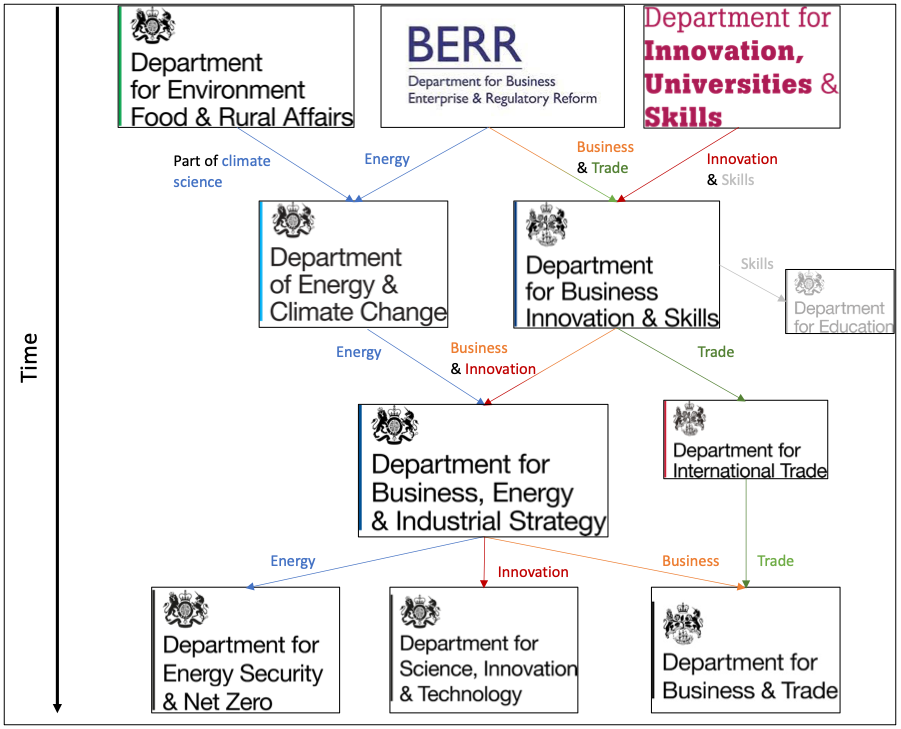Blog Series – Breaking BEIS: Risks & Opportunities for Engineering Policy (4/4)
By laurent.liote.19, on 8 March 2023

This 4-part blog series covers the recent dismantling of the UK government’s department for Business, Energy and the Industrial Strategy (BEIS) and what it means for engineering policy. We take this opportunity to look at what we can learn from the creation and internal organisation of BEIS to reflect on how machinery of government changes affect engineering in and for policy. This blog series is written by final year PhD candidate Laurent Lioté, working on engineering advice for energy policy and part of STEaPP’s Engineering Policy Group.
Science, Innovation and Technology… but still no engineering
My final point is somewhat more conceptual than my previous ones (posts 1, post 2 , post 3) but just as important. Engineering is clearly key for energy and innovation policy so why does it not get an explicit mention in the new ministries’ names or remit? Perhaps because the concepts of science, innovation and technology are thought to cover engineering – but this is not exactly true and has an important impact on engineering policy. All the arguments made in this post are adapted from this article written with Adam Cooper and Chloé Colomer, where we discuss this topic in more detail.
Science is often thought to include engineering because of the common belief that engineers “apply science” in the process of innovation or technology creation. But this is not always the case, a lot of engineering focuses on maintaining systems and optimising already existing processes. Moreover, a lot of science happens in publicly funded academic research institutions whereas most engineers work in private sector companies.
Taking a narrower view, we can also make the case that engineering and science advice for energy policy (now the in the Department for Energy Security and Net Zero’s portfolio) is different too. Within energy policy, science advice focuses on the biological (like the types of organisms in an anaerobic digester or amount of gas emitted) and engineering focuses on the physical features of the reactor (like how the reactor and engine are built). Engineering is about objects and their performance whereas science is about bio- and ecosystems. Science advice, because it is concerned with biological and ecosystems, is methodologically driven by a hypothesis that measurements can validate or invalidate. Engineering advice on the other hand is outcome-driven or solution-oriented, where measurements help achieve a goal that best meets project design criteria.
Focusing on innovation or technology doesn’t do engineering justice either. Indeed, such focus is necessarily rooted in objects, with the engineers in orbit. Whereas a focus on engineers is rooted in their skills, knowledge, and practices, often with technologies in orbit. Exploring engineering practice surfaces how engineers draw on existing and new knowledge, how they communicate amongst themselves and with others in a way that exploring technology does not.
If assumptions and concepts from “science, innovation and technology” do not apply equally to engineering, perhaps a distinction in policy terms is important if engineering is to be governed effectively. But perhaps we’ll have to wait for the next reshuffle to see engineering pop-up in the name or remit of a UK government department!
 Close
Close



